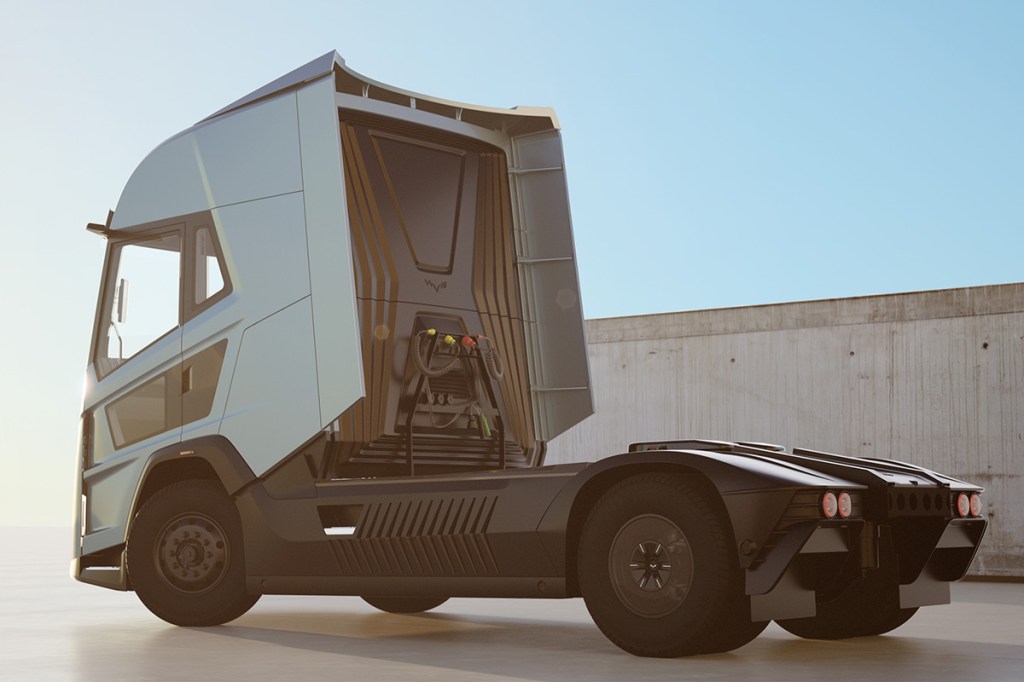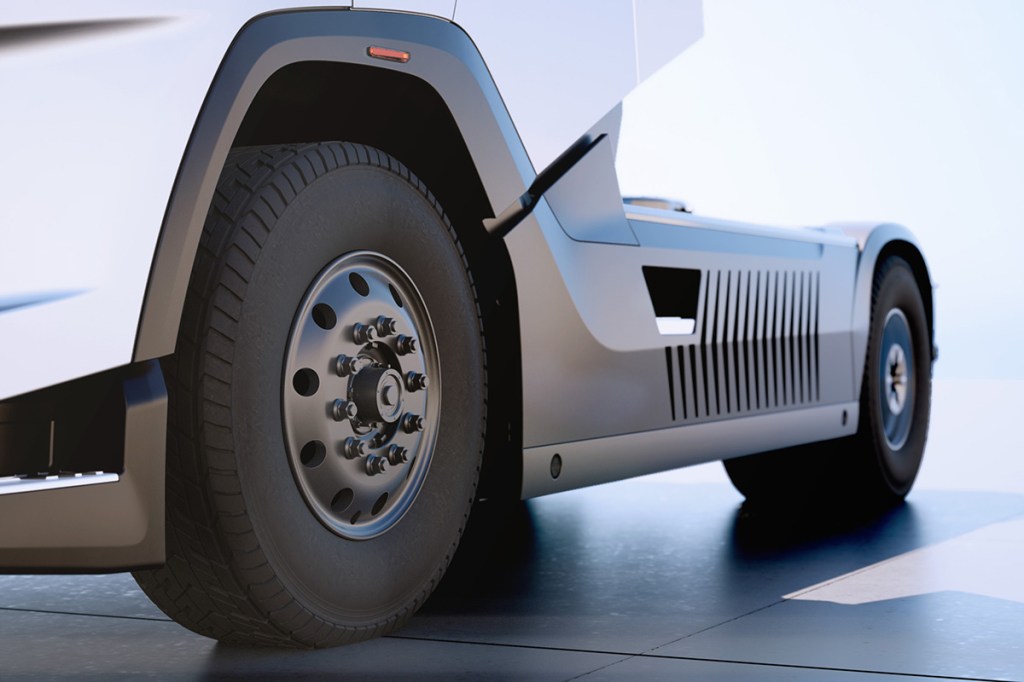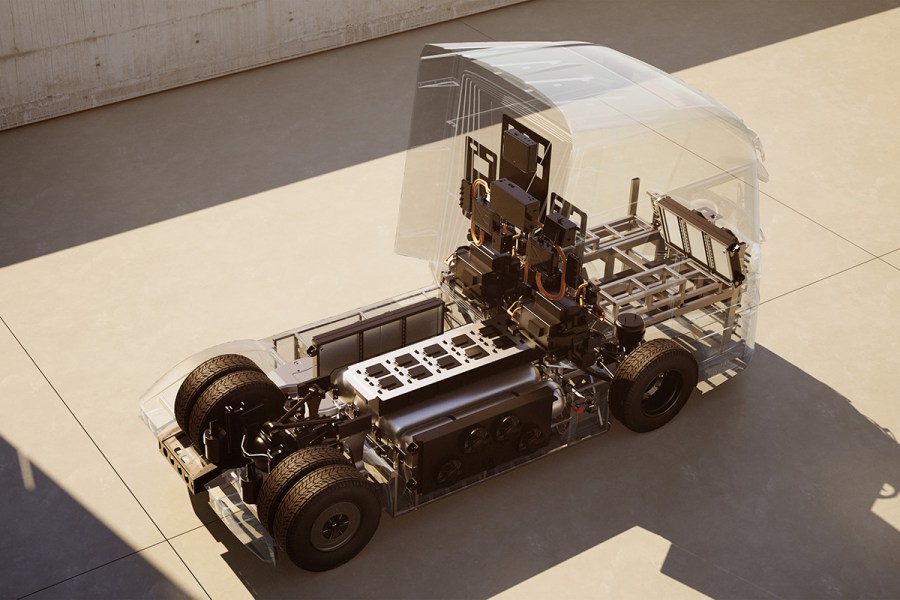Hydrogen Vehicle Systems (HVS), has unveiled its modular Heavy Goods Vehicle platform, offering HGV operators maximum flexibility from a single base vehicle. The modular platform is built on a fixed wheelbase, which means the vehicle’s footprint does not change, irrespective of specification.
The company’s tractor unit will be available with two types of e-axle – one medium power and one high power – and with up to three hydrogen tanks, depending on range requirements. The hydrogen fuel cell powertrain can also be specified with two different power outputs depending on payload requirements.
HVS has designed the vehicles from the ground up to maximise driver comfort around its purpose-built hydrogen powertrain. The vehicle’s design includes a suspended cab at the front and a fixed tower at the rear, housing the thermal and powertrain systems.
This platform format breaks with the industry-standard tradition of variable cab types and sizes – such as big, medium and small, and high/low-roof – and means that even the smallest variants have the same spacious cab as the largest models.
The modular platform’s flexibility allows the trucks to easily be retrofitted with alternative modules, such as additional hydrogen tanks if the fleet’s duties change or expand.

Pete Clarke, Head of Design at HVS, said: “We’re offering maximum modularity within a single base vehicle platform, and we would never have been able to achieve this level of flexibility and optimisation with a diesel-powertrain derived vehicle design.
“Our vehicles have been created for a fundamentally different technology within an all-new package, so every cubic millimetre has been designed afresh. We initially calculated the maximum wheelbase possible to achieve the required turning circle and manoeuvrability for the target market. The design process then began with the optimal powertrain format, around which the vehicle design was then created – ensuring that form followed function.
“Rather than playing with a configurator, HVS can put the best value package together for customers based on information about what they do, the loads they will carry, along with their ranges and routes.”







